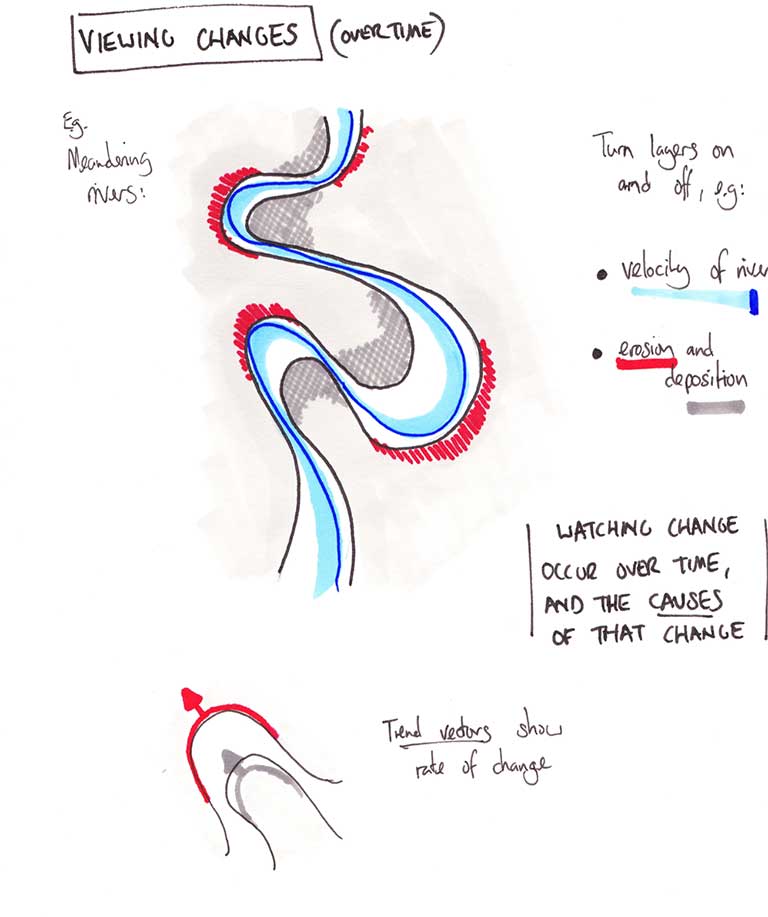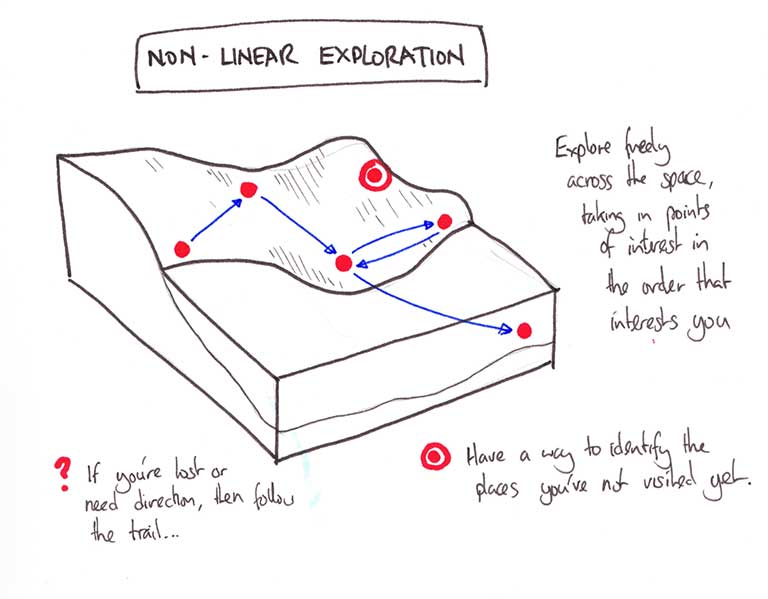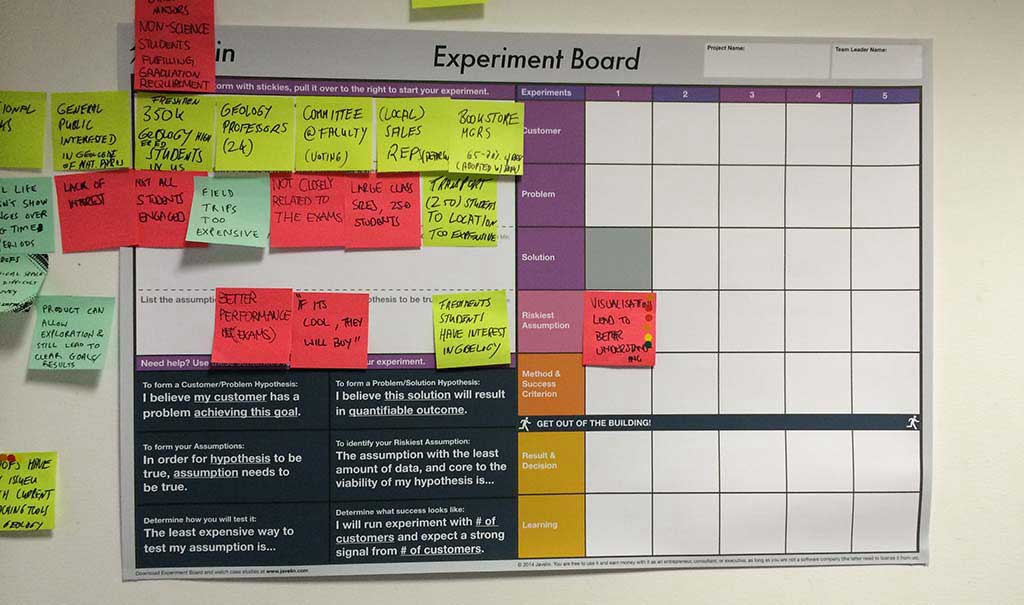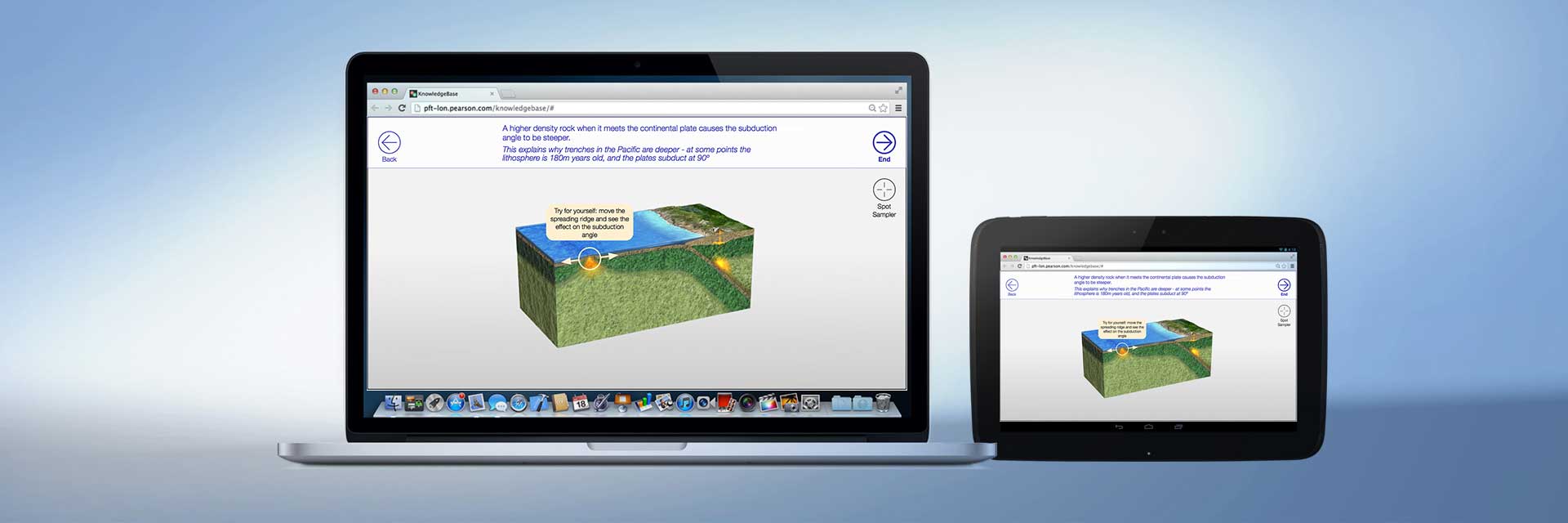Apoc
Pearson North America
Making geology engaging and understandable through interactive simulations
The Challenge
Geology teaches a wide range of skills, but how can students be helped to study and enjoy it?t
We met with subject matter experts at Pearson, who were keen to develop new teaching aids for geology. Despite teaching some very interesting theories, it was felt that the traditional course material could only go so far in explaining them, and that students sometimes lacked engagement in the subject.
Design Highlights
- We were keen to try out a new Lean development process called the experiment board for this project, to see whether it could improve on our existing innovation process.
- Firstly, to help mitigate our ignorance of the subject, we quickly reached out to subject matter experts and several Geology professors in the US to get more of an understanding of the subject, and to get our own interpretation of what the challenges were. We did this through an investigative and open questioning style, designed to open up answers and gain new insights. Some of these insights were extremely enlightening, such as students who were gamers fared well, since they had more developed spatial awareness.
- We arrived at some early hypotheses, such as conveying massive scales of time and space is difficult, and interactive experiences would better explain these phenomena. Our professors and stakeholders agreed with these, and so we progressed them into design objectives.
- We then explored some different cases in which these could best be solved with interactive experiences, whilst being mindful of how the complete course could be taught. We again looped back with our experts to confirm which ideas had the best potential.
- Our concepts expanded to a grand vision of what an ideal future solution could look like, but we needed to reduce it down to something attainable in our short timeframe. We focused in on one case to start with: tectonic plate subduction zones. First we had to learn it for ourselves, which gave us some first-hand experience of the problem..
- This topic is based on some basic scientific principles, such as convection currents and viscosity, only they happen over massive periods of time, which can be really hard to get your head around. So, we wanted an interactive tool where we could simulate the passage of time really quickly, in the same way that things look different when sped up or slowed down massively.
- We ended up with a 3D simulation that took you through the learning content, only allowing you to take readings of things like temperatures and density, and to re-run the simulation with different parameters, to explore what change they have.
Geology happens over massive periods of time, which can be really hard to get your head around
Outcome
After several feedback loops, we arrived at a working prototype that worked using WebGL in a browser, thereby giving it maximum reach. We didn't get a change to test this one directly with end users due to time and geographical constraints, which was a shame. We did however share it with our stakeholders who received it very positively and will test it as they take it forward to the next stage of product development.
Early concept validation sketches:



Using the Experiment Board as a concept validation and devlopment tool:

Later stage wireframes:

